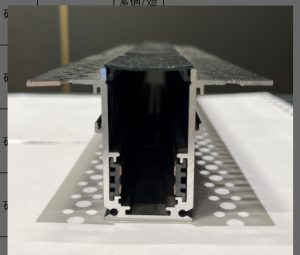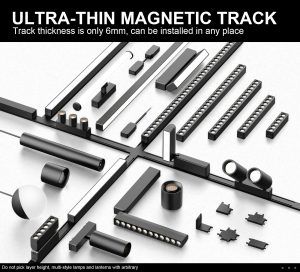Advantages of magnetic track lights:
1. Compatible with various lighting fixtures. Magnetic track lights utilize a modular design, allowing for a wide range of compatible light source modules, including downlights, spotlights, grid lights, floodlight strips, and pendant light cords. This allows for flexible light source selection, allowing for DIY customization to meet the lighting needs of different spaces.
2. Flexible addition and subtraction of lighting fixtures. There’s no limit to the number of fixtures that can be installed on the track. If the brightness isn’t enough, magnetic attraction can be used to add additional light sources. If the brightness is too high, simply use fewer light sources.
3. Free movement and angle adjustment. On the magnetic track, the light source can be freely moved, allowing for flexible placement of the lights according to the space’s needs. Furthermore, many magnetic light sources, including magnetic spotlights and magnetic grid boxes, are angle-adjustable, increasing the freedom of lighting design.
4. Low-voltage safety, no contact hazards. Magnetic track lights on the market generally utilize a 24V or 48V low-voltage design. Even if the track is powered, direct contact with or installation of the fixtures poses no risk. Disadvantages of magnetic track lights:
1. Compared to ordinary track lights, magnetic track lights are more expensive.
2. Magnetic track lights are a relatively new lighting product. Carpenters and electricians may not have experience installing similar products, as older, thicker track lights require cutting holes and slots. This can lead to installation errors and high initial communication costs. New ultra-thin surface-mounted track lights can solve this problem.

